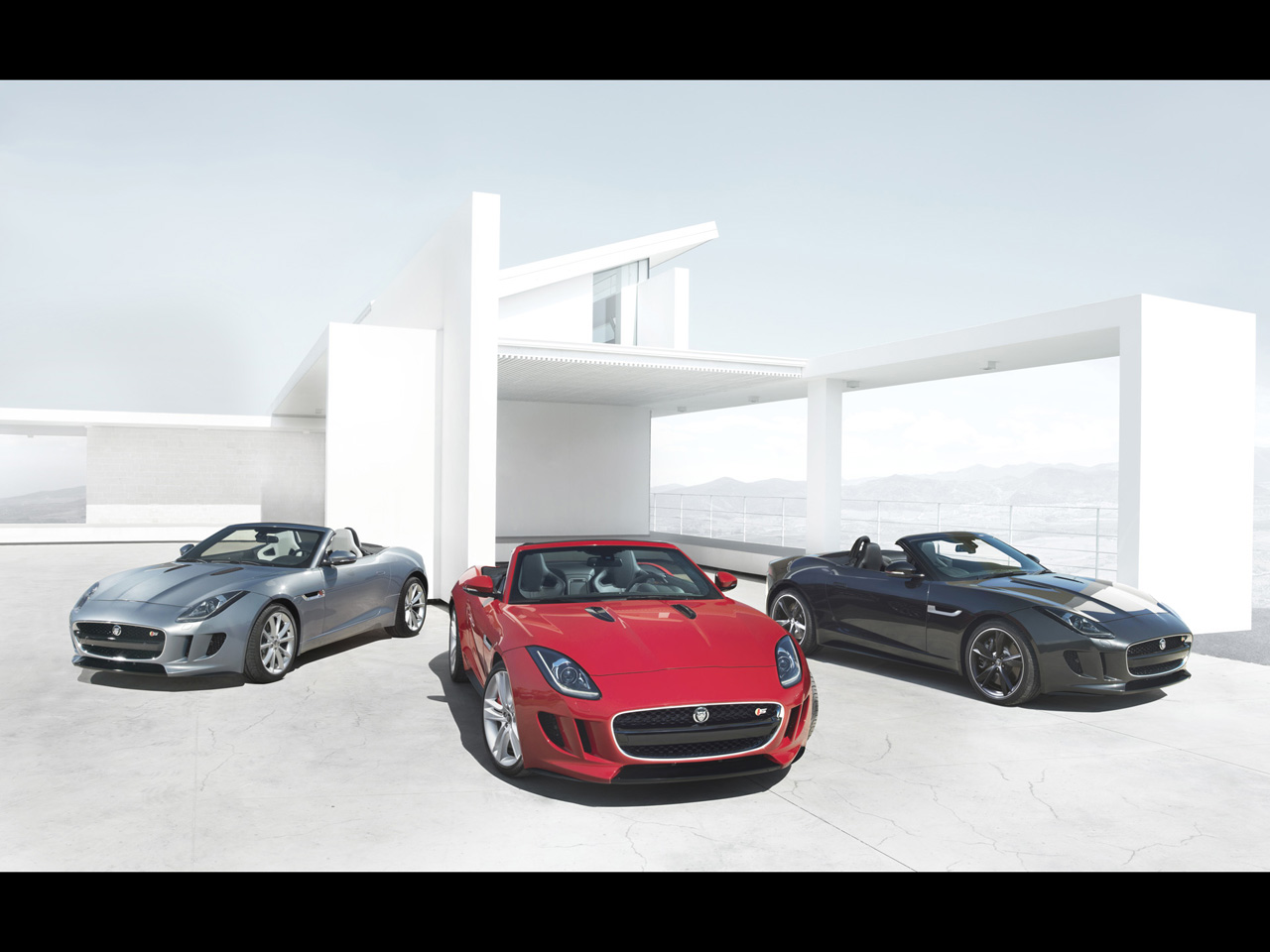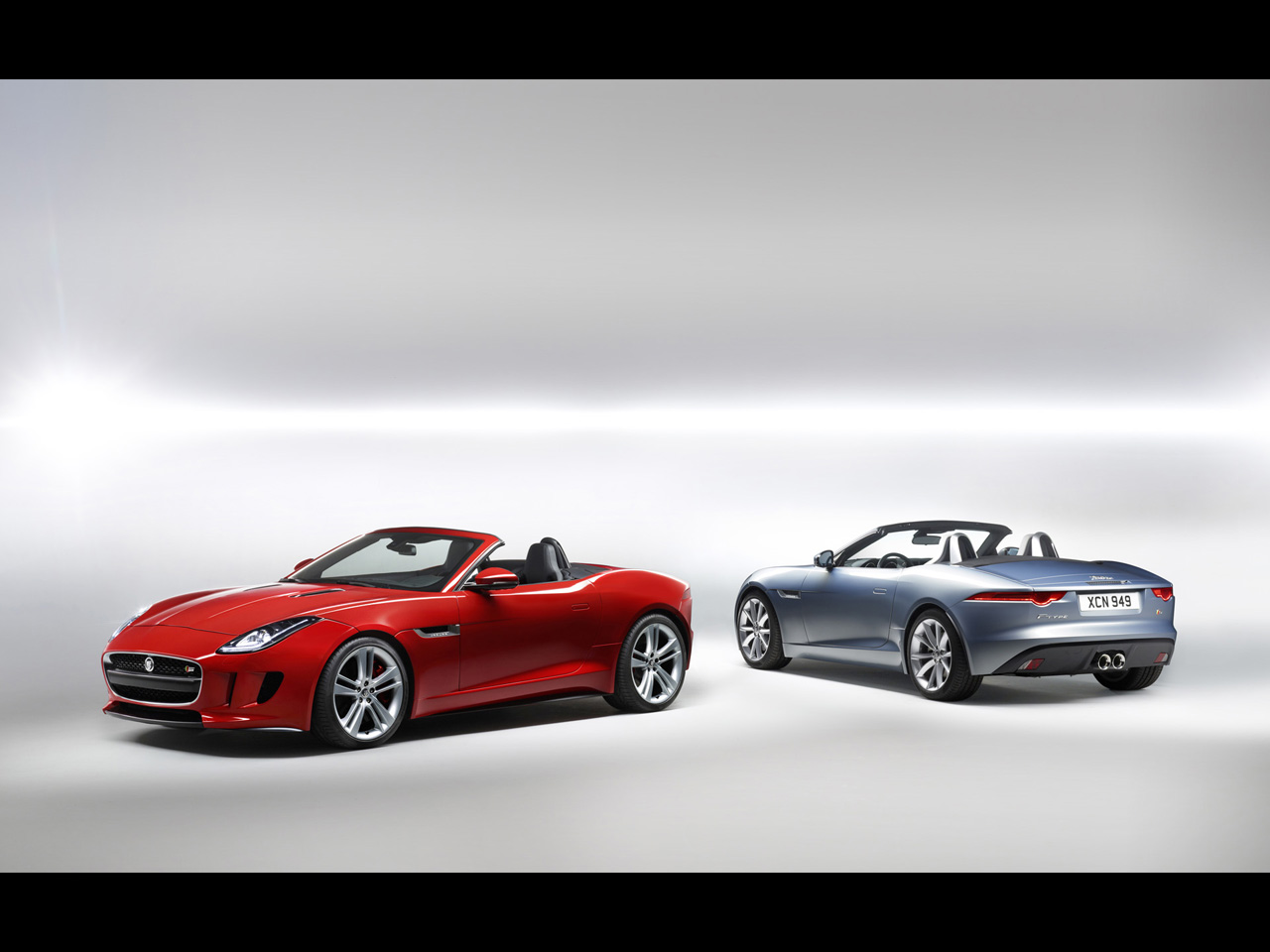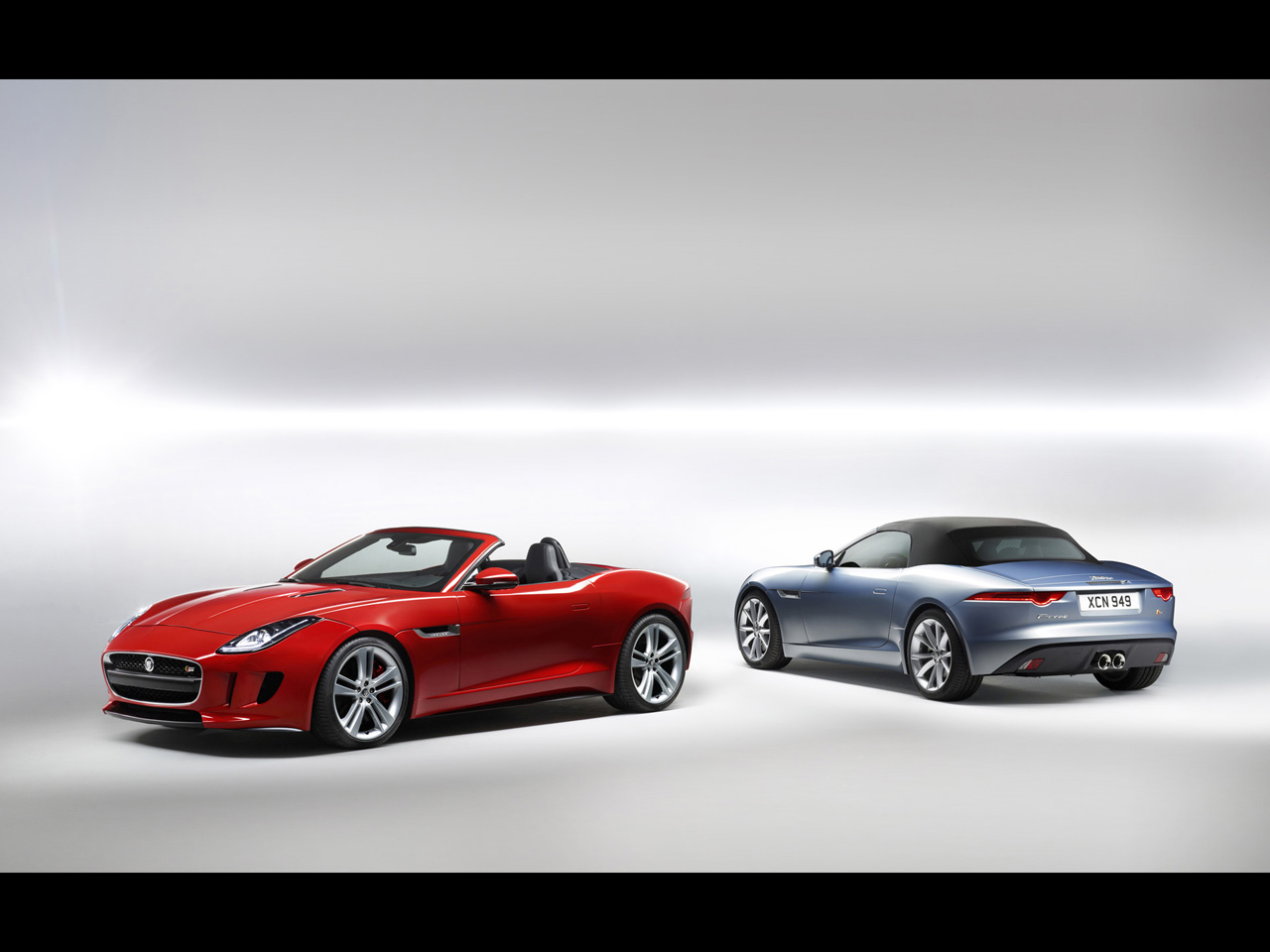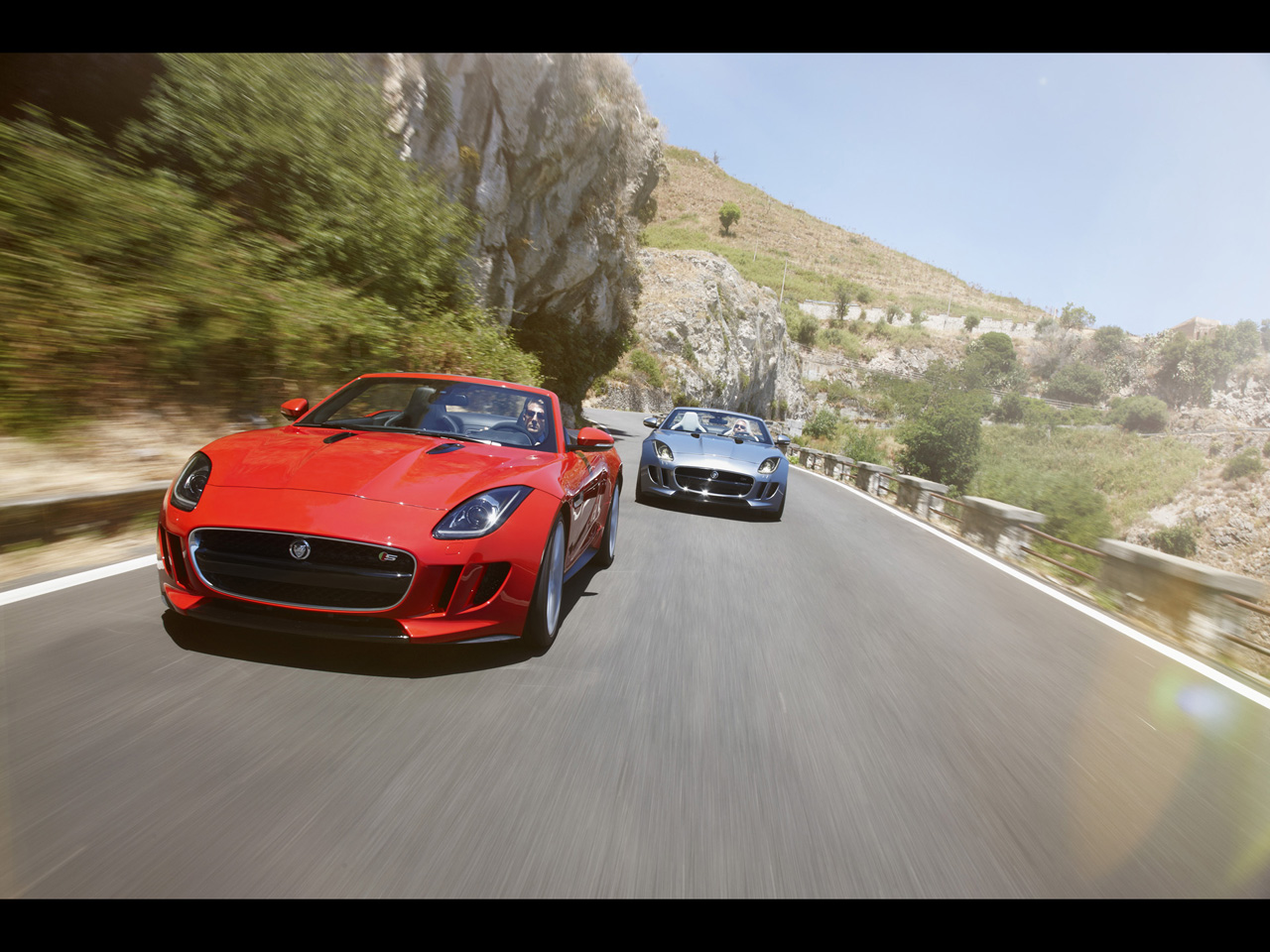2013 Jaguar F-Type
|
Price |
-- |
Production |
-- | ||
|
Engine |
3 liter V6 & 5 liter V8 |
Weight |
-- | ||
|
Aspiration |
supercharged |
Torque |
-- | ||
|
HP |
335, 375 & 488 hp |
HP/Weight |
-- | ||
|
HP/Liter |
-- |
1/4 mile |
-- | ||
|
0-62 mph |
5.1, 4.8, and 4.2 seconds |
Top Speed |
161, 171, and 186 mph |
(from Jaguar Press
Release) JAGUAR F-TYPE AT THE PARIS AUTO SHOW 2012
The F-TYPE, an all-new, two-seater, Jaguar sports car today makes
its public debut at the Paris Auto Show.
Adrian Hallmark, Global Brand Director, Jaguar, said: "Jaguar is a
founder member of the sports car segment with a rich sporting
bloodline stretching over 75 years, and in the F-TYPE we've
reignited that flame. The F-TYPE isn't designed to be like anyone
else's sports car. It's a Jaguar sports car - ultra-precise,
powerful, sensual and, most of all, it feels alive."
The new Jaguar F-TYPE
represents a return to the company's heartland: a two-seater,
convertible sports car focused on performance, agility and driver
involvement. The F-TYPE is a continuation of a sporting bloodline
that stretches back more than 75 years and encompasses some of the
most beautiful, thrilling and desirable cars ever built.
The engineering ethos underpinning the F-TYPE is centred on Jaguar's
industry-leading expertise in the use of aluminium. Featuring the
most advanced iteration of Jaguar's acclaimed rigid and lightweight
aluminium architecture to date, the F-TYPE has ideally balanced
weight distribution that allows its involving rear-wheel drive
dynamics to be explored to the full. Utilising extensive Computer
Aided Engineering programmes, the attention to detail involved in
the F-TYPE's creation even extended to the development of a new,
lighter, aluminium front subframe.
In order to maximise the benefits of its advanced structure, the
F-TYPE features all-aluminium double wishbone front and rear
suspension and a quick-ratio steering rack for ultimate
responsiveness. The aluminium architecture has been optimised to
provide the stiffest possible underpinnings for the suspension with
rigidity gains of more than 30 per cent in key areas compared to any
other Jaguar application.
Three variants will be available at launch - F-TYPE, F-TYPE S and
F-TYPE V8 S. Each is distinguished by the power output of its
supercharged petrol engine with all engines featuring stop/start
technology to maximise efficiency.
A new 3.0-litre V6, developed from Jaguar's highly acclaimed
5.0-litre V8, is available in either 340PS or 380PS variants,
powering the F-TYPE and F-TYPE S respectively. Both applications
exhibit the same free-revving, willing nature that encourages the
enthusiastic driver to explore the full extent of the engines'
abilities.
The V6 models are joined by a newly developed member of Jaguar's V8
engine family. Producing 495PS and 625Nm of torque in the F-TYPE V8
S model, it has an astonishing torque-to-weight ratio of 375Nm/tonne,
accelerates to 60mph in 4.2 seconds (0-100km/h in 4.3 seconds) and
on to an electronically limited top speed of 186mph (300km/h) while
emitting 259g/km of CO2.
The 380PS V6 F-TYPE S covers the 0-60mph sprint in 4.8 seconds
(0-100km/h in 4.9 seconds) and has an electronically limited top
speed of 171mph (275km/h), with CO2 emissions of 213g/km.
The 340PS V6 F-TYPE accelerates to 60mph in 5.1 seconds (0-100km/h
in 5.3 seconds) and on to an electronically limited top speed of
161mph (260km/h), while emitting just 209g/km of CO2.
An active exhaust system, which is standard on the S and V8 S
models, adds another dimension of driver-engagement. Valves in the
exhaust system open under load from 3000rpm which allows the exhaust
note to build to a thrilling crescendo at the redline.
The F-TYPE has a set of eight closely-spaced, sporting ratios in its
Quickshift transmission, giving greater driver control. The
V6-powered S model also includes a Dynamic Launch feature, which
optimises acceleration from rest.
The company's eye to the future is encapsulated in the assertive
design language that deliberately challenges preconceptions. Jaguars
have always defined sinuous, muscular simplicity and the F-TYPE is
no exception, its shape being defined by two 'heartlines' forming
the front and rear wings.
Taking inspiration from the C-X16 concept unveiled in 2011, the
front of the F-TYPE features a new interpretation of the bold
angular Jaguar grille from which flows the muscular clamshell bonnet
with its signature 'power bulge'. The all important heartline begins
its journey in the blade dissecting the shark-like gills on either
side of the grille before leading the eye to the top of the front
wing, emphasised by the bi-xenon headlamp and integral LED daytime
running lights, into the door and towards the rear of the car where
it gracefully disappears.
Its journey is taken up at this point by the second heartline which
swells out to form the muscular rear haunch before sweeping
dramatically around the sensual low tail, made possible by the
inclusion of an active rear spoiler which deploys at speed to reduce
lift by up to 120kg. Full LED rear lamps create a new Jaguar sports
car signature by reinterpreting classic cues from the past and, by
wrapping around to the trailing edge of the rear wheelarch,
emphasise the powerful stance of the car and its rear-wheel drive
sporting potential.
The focus on driver involvement and sporting performance in the
F-TYPE is emphasised by the 'one plus one' layout of the asymmetric
cabin. This is evidenced by the grab handle which sweeps down the
centre console on the passenger side, delineating it from the
driver's position. Further differentiation is provided by the use of
different trim materials either side of the cabin, with a more
technical finish on the driver's side.
Taking inspiration from cockpits of fighter airplanes, the controls
are ergonomically grouped by function. Further aeronautical
inspiration can be found in the joystick-shaped SportShift selector
controlling the eight-speed transmission. The air vents on top of
the dashboard will only deploy when instructed to by either the
driver or complex control algorithms, staying tucked discreetly out
of sight in other circumstances.
"With the F-TYPE, the Jaguar engineering team focused on delivering
greater dynamic driving reward than ever before. To make that a
reality, every engineer has had very tough targets to hit: every one
of those targets has been met and, in many cases, exceeded, making
the F-TYPE a car that delivers precisely the key sporting attributes
that we intended."
Ian Hoban, Vehicle Line Director, Jaguar



